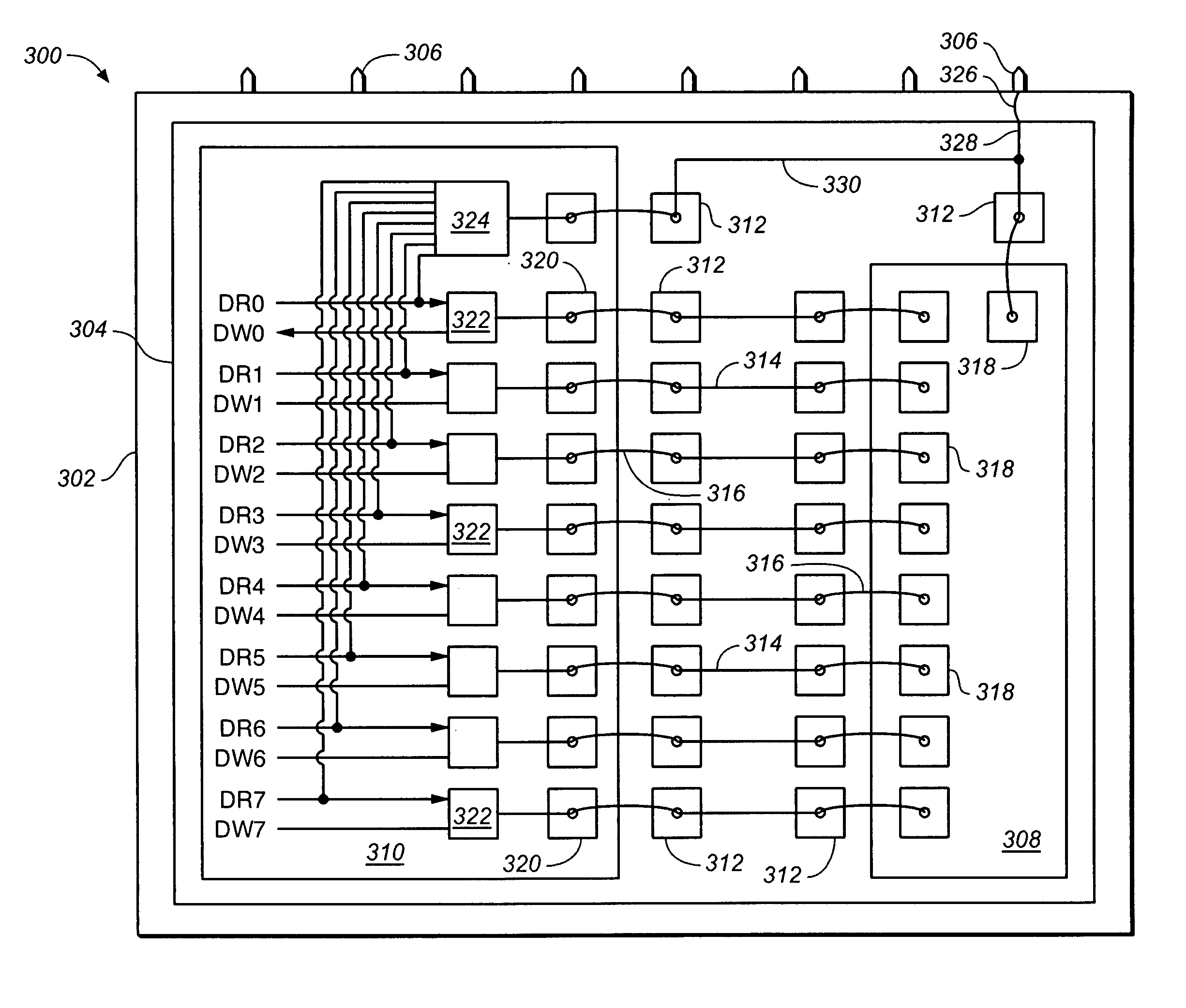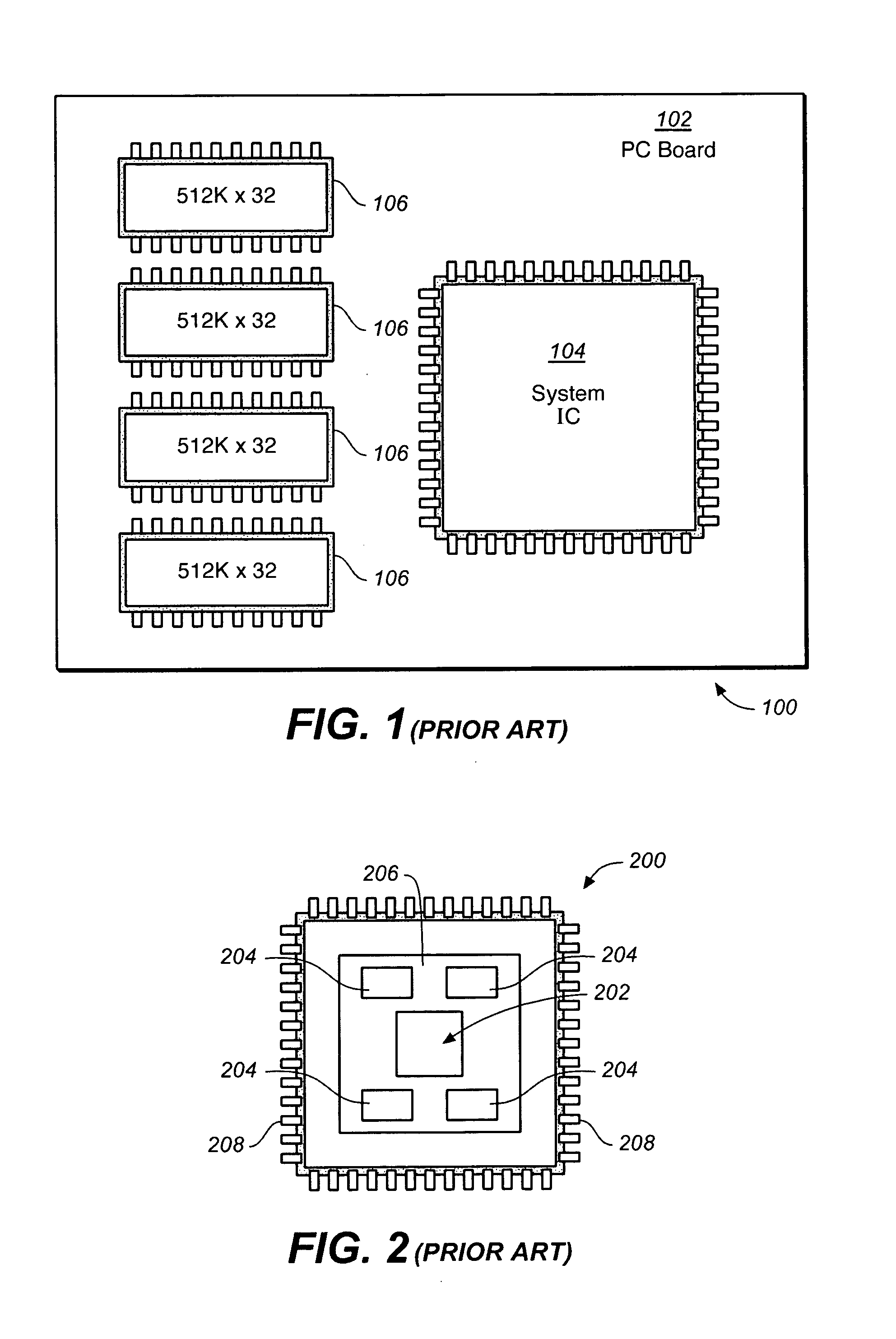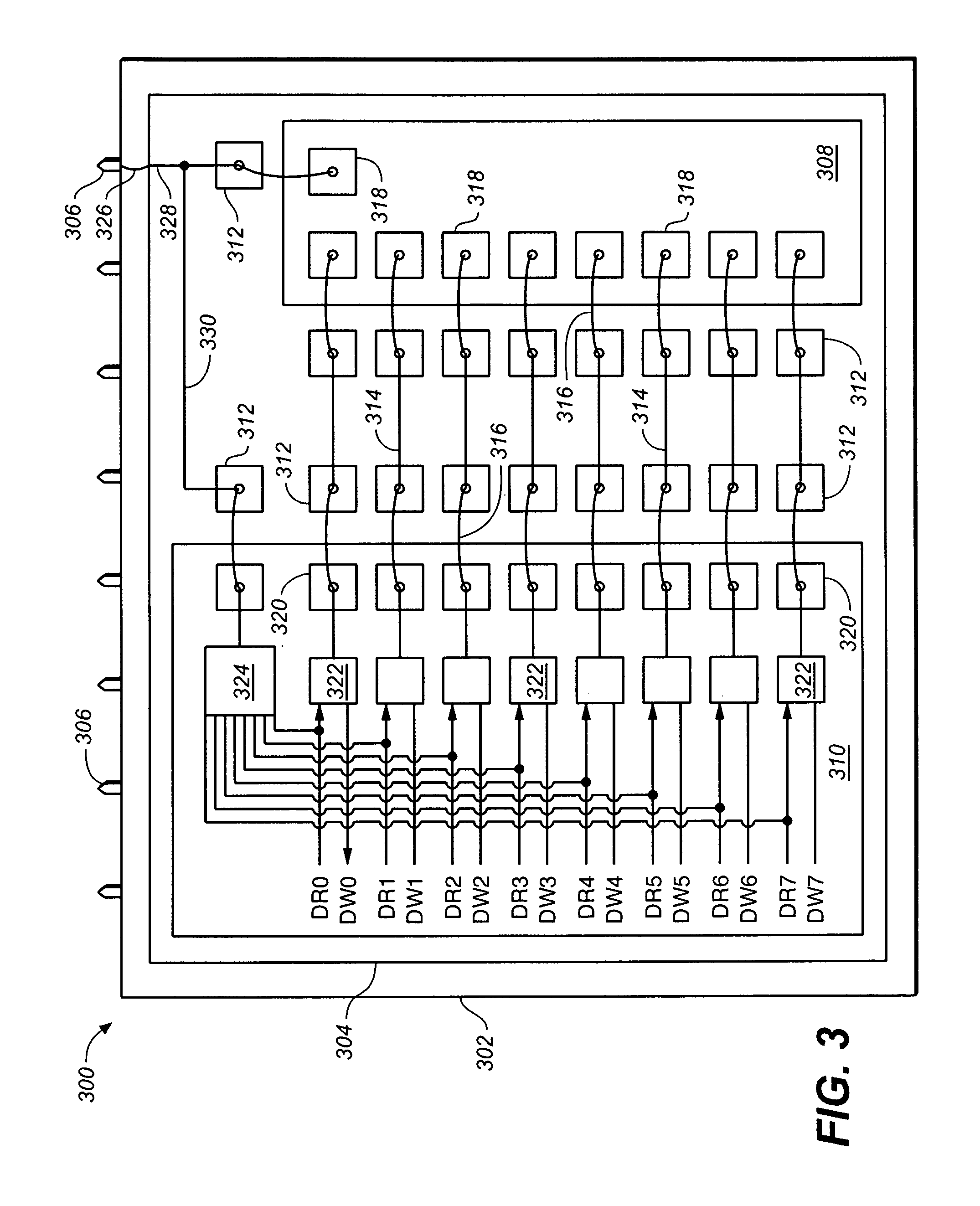Chip testing within a multi-chip semiconductor package
a technology of semiconductor devices and chips, applied in the direction of information storage, static storage, digital storage, etc., can solve the problems of secondary chips that are not able to “talk” or communicate directly through external connectors, and cannot be tested fully
- Summary
- Abstract
- Description
- Claims
- Application Information
AI Technical Summary
Benefits of technology
Problems solved by technology
Method used
Image
Examples
Embodiment Construction
[0033]The present invention provides a system and method for testing one or more secondary chips within a multi-chip packaged semiconductor device. The secondary chip may comprise any type of chip that lacks sufficient connections to external pins or terminals of the multi-chip package to allow complete testing of the secondary chip. For example, a secondary chip may comprise a memory subsystem, a co-processor subsystem, an analog subsystem, or other application-type specific subsystem. A secondary chip comprised of a memory chip is selected as an exemplary application in accordance with an embodiment of the present invention and described in detail below. However, it should be understood that the principles of the present invention are applicable for other types of secondary chips within a semiconductor package and are not limited to exemplary embodiments described herein.
[0034]FIG. 3 is a block diagram illustrating a multi-chip module (MCM) 300 in accordance with an embodiment of ...
PUM
 Login to View More
Login to View More Abstract
Description
Claims
Application Information
 Login to View More
Login to View More - R&D
- Intellectual Property
- Life Sciences
- Materials
- Tech Scout
- Unparalleled Data Quality
- Higher Quality Content
- 60% Fewer Hallucinations
Browse by: Latest US Patents, China's latest patents, Technical Efficacy Thesaurus, Application Domain, Technology Topic, Popular Technical Reports.
© 2025 PatSnap. All rights reserved.Legal|Privacy policy|Modern Slavery Act Transparency Statement|Sitemap|About US| Contact US: help@patsnap.com



